| Umělec 2011/1 >> The red shoes | Просмотр всех номеров | ||||||||||||
|
|||||||||||||
The red shoesUmělec 2011/101.01.2011 Hilary Davidson | cinema | en cs de |
|||||||||||||
|
It is night. On a platform edge in an empty subway station sits a pair of beautiful pink shoes, alone and ready to wear. No one is present; the shoes are abandoned, ownerless. Why not pick them up, put them on and take them home?
In the Korean film The Red Shoes (Bunhongsin (Yong-gyun Kim, 2005)) gruesome answers to this question reveal the fatality of possessiveness in a ghost-tale concerning female identity and the psychological power of shoes. Motifs from the J[apanese] – and K[orean] – horror genre intertwine with ideas from two Western sources to which the title pays homage: Hans Christian Andersen’s fairytale “The Red Shoes” (1845) and the Powell and Pressburger ballet film of 1948.1 Three works wrapped within one title form the first of many triads recurrent through the film, repetitions of two women pivoting their opposition on a contested object of desire, whether man or pair of shoes. Bunhongsin prioritises the violence implicit in the earlier texts to enhance the potency of the red shoes symbol as a vehicle for impassioned, destructive “self-fashioning”.2 The pre-title scene is set by a schoolgirl who succumbs to temptation whilst waiting for a friend at the station. The elision into magic space happens quickly as she picks up the footwear in her hand; in the next shot they appear on her feet. From nowhere her prettier friend appears and demands the red shoes as her right. Why do they cause such instant jealous desire? The shoes themselves are archetypal twentieth-century designs fashionable anywhere from 1920 to the early twenty-first century (it’s no accident that their shape resembles the ruby slippers from The Wizard of Oz). The newcomer wins a fight for the shoes and goes upstairs. She walks – or do the shoes walk her? – into the first of the film’s corridors of light. Though alone, sounds of other footsteps echo menacingly through the empty station until with a flash of a dark figure the girl falls over. The camera, pulling back, reveals both legs severed below the calf as her screaming begins... Andersen’s vain heroine is being danced to death by her red shoes until she asks the executioner to chop off her feet. The scapegoat shoes with the dismembered bloody stumps still in them dance “away into the dark forest”,3 a physical removal of sin that saves the girl and her soul. Bunhongsin inverts this formula with brutal speed by saving the shoes from the girl. The amputation kills her; the shoes absorb the trails of blood, and return to a pristine state, ready to kill again. The 1948 The Red Shoes forms a conceptual link. Hein Heckroth, the Oscar-winning production designer, encapsulates both films’ plots with a terse summary: “The girl wants the red shoes. She gets them. They destroy her. There will be other girls and they will destroy them too.”4 Throughout, the fetish power of the shoes is uppermost, not the agency of the women who possess, with deadly brevity, the shoes’ allure. The wearer ends and the shoes start their story again (as the post-script scene reiterates). Moving amputation from climax to beginning reverses the story-sequence so that the narrative unravels the shoes’ cursed origins. After this blood-soaked start, the main story begins. A middle-class woman with a small daughter, Tae-Soo, leaves her husband after his infidelity. She moves to a small apartment and starts a new life with her dance-loving daughter. The woman finds the red shoes on a train and takes them home. When Tae-Soo sees her wearing them she becomes obsessed with the shoes and repeatedly takes them from her mother, who feels the same strange compulsion. A visiting friend finds their allure too strong and steals them, only to be found dead in a shop window that same evening, missing an eye, her feet, and the shoes. In a series of increasingly disturbing supernatural events, the shoes keep reappearing in Tae-Soo’s possession. Blood gushes from basins and ceilings, footsteps are heard where no-one is, ghostly figures from the past suddenly appear. Soon a 1944 tale of two ballerinas emerges through flashback visions. The better dancer, Oki, possesses the red shoes and the love of the choreographer. Her rival Keiko is consumed with jealousy and kills Oki, taking her shoes, her man and her roles. Oki’s supernatural revenge is exacted through scenery that strangles the new couple on their wedding day and it is Oki who is haunting the shoes in the present day. When the pattern is clear – she who takes the red shoes from another woman dies – the modern woman fears for her daughter’s life. At the same time, the mother is conflicted by her increasing rage at Tae-Soo’s refusal to give her back the shoes. The denouement plays out in the same empty station through stylised mechanics of apparitions, trains and blackness. The film finally identifies the modern woman’s psyche with both Oki and Keiko to question the nature of haunting and ends with eerie ambiguity. We first meet the protagonist in her suburban kitchen. She is anonymous, unnamed by her distant husband in a triad comprising mother-father-daughter. Her relationships determine her identification: inadequate wife, ignored mother, timid woman, not an individual person. Only an hour into the film do we learn to call her Sun-Jae. Naming and identity are key issues of red shoe narratives. Andersen first calls his “little girl who was pretty and delicate” Karen when her mother dies and she receives her first pair of red shoes.5 Powell and Pressburger’s spirited ballerina Vicky loses her name and becomes defined through an immature femininity as “The Girl” in the central ballet of The Red Shoes. Their identities fluctuate around episodes of their shoe wearing. When Sun-Jae discovers her husband’s infidelity, she is revealed as similarly embodied, by glamorous, expensive shoes, and the film’s metaphor of shoes substituting self is activated. Sun-Jae returns home early to find male and female shoes beside the door. Her first sight of the clandestine activity upstairs is her own black stiletto dangling from the coitally-raised left foot of the other woman in this triad. A following scene discovers Sun-Jae’s astonishing dressing room of shoes staged in all the visual rhetoric of a luxury showroom, diffuse of light and enveloping of carpet. Glistening shelves fill a whole wall revealing visions of delicate heels and jewelled toes – a personal pleasure-feast of objectified beauty. Sun-Jae practices walking in the usurped black shoes that the Other Woman wore. A tri-fold mirror validates this act of performative identity as it reflects Sun-Jae back to herself, figured as an alternative person, while the mirror’s wings fragment and multiply her vision. Next, the minute grotty flat of Sun-Jae’s independence becomes a site for transformation: haircuts, cleaning and domesticating, creating a feminised bower. Even in this reduction from her bourgeois life a huge display of shoes demonstrates how Sun-Jae invests these objects with the most personal importance. They take central place in her apartment, a shrine lit with candles. Yet we never see her wearing any except the red shoes, suggesting that her inner facets are as effectively static and subject to repressive compartmentalising. Glass shelves box in all her other selves, just as Snow White was kept lifeless in a glass coffin. Her less-attractive friend Mi-Hee voices some uncomfortable insights about Sun-Jae, digs about “self-pride that will do you wrong”, and the things she wants like “money ... and glamorous shoes”. Coming uninvited to the flat Mi-Hee comments that Sun-Jae is “keeping up her hobby” of collecting shoes, belittling their psychological importance to her friend. The crime for which the shoes later punish Mi-Hee is perhaps her refusal to uphold the way her friend sees herself. Looks really can kill in this film as it revolves around the light, seeing and reflection embedded in almost every scene. The inorganic cityscape is all glass and sinuous metal; hollow marble halls and fluorescent corridors. Sun-Jae and Mi-Hee are both ophthalmologists. Building her new clinic introduces Sun-Jae to the interior artist (and object of desire) In-Chul, a man predicated on the visual who designs her a giant eye logo. Women use the film’s many mirrors to view doppelgänger selves, or search their reflections for identity in the vanity of surfaces. Seeing the red shoes inspires an instant lust for their possession, especially when they are possessed by another. Unexpected glimpses of sexual betrayal spur murderous actions. Flickering lights herald the ghostly presence’s control of seeing and blindness. A bulb explodes into Sun-Jae’s eye, damaging her vision, which is already shaken by waking nightmares.6 Can we trust what she is shown to be seeing, or her sense of time? When the lights go out or the mist rolls in, obscurity is also significant for what the characters do not see themselves doing. Losing an eye, the ability to see, is common to the victims of the red shoes. The whole theme conjures the theatrical magic spaces where controlled lighting manipulates audience perceptions. I argue elsewhere that Andersen’s story is rooted in his own psychopathology, his narrative symbol of red shoes tied to the inner experience of the wearer.7 Both Powell and Pressburger’s Vicky and Yong-gyun Kim’s Sun-Jae have their interiority conveyed through camera shots, editing, and blurring of reality and the visions we see them see. Bunhongsin conflates external actions of spirits and internal drives of the unconscious to provide a dualistic explanation for the narrative events. The psychology is definitely Freudian. Extending the analyst’s categorisation of shoe as a symbol of female genitalia8 leads to a surprisingly feminist reading of a woman’s passion for shoes: the possibility of creating a perfect self-contained sexual relationship, with herself taking both gender roles. Her phallic foot fills her waiting shoe and the pleasure is all hers, compounded by scopophilic delights of looking at her feet wearing the shoes.9 The first girl seen trying on the red shoes closes her eyes and exhales as she concentrates on her internal reactions to wearing them. Unlike an orgasm, the sensations are instant, assured, and easily repeated. The power ascribed to shoes by belief and psychology practices relates to their nature as a vessel, and female desire for shoes responds to their self/containment. Like the equally fetishised corset, there is a liminal interface between an object moulding and moulded by the body. Feet mould shoes’ materiality to retain an impression of the absent wearer, holding a person’s spirit in their empty interiors. Builders exploited this quality by concealing shoes in place of living sacrifices to bless the building.10 Unlike soft clothing, the rigid structure of shoes keeps their form without the foot. They wait, containing and continuing emotions created by the relationship between the wearer’s projections and the shoes, telling tales of who the wearer is and who she would like to be, quotidian or outrageous, independent of wear-processes that mediate the body.11 The shoemaker Manolo Blahník knows this well. He names each design after the imaginary woman evoked, a power of magical narrative that helps to make his shoes’ fantasy identities some of the world’s most desirable. Madonna famously said that Blahník’s shoes are “better than sex and they last longer”,12 reinforcing the concept of private individual pleasure. The red shoes woman is larger than life. She is alluring, mysterious, self-confident; her emotions are modified by dress. When Sun-Jae demands the stolen red shoes back, Mi-Hee, in make-up, carrying bags full of designer gear, asks her, “You know how great I feel right now?” Sun-Jae does: she rode the shoes’ energy the night before to seduce the designer with vamping confidence, and it’s a feeling she’s obsessed with keeping to herself. But this woman is as incorporeal as magazine pages, the catalogue of static selves moving perpetually, like film, in a moment that never existed. In real life the fashion event or the construction of glamour is impossible to sustain. The idea of the red shoe woman remains forever connoted but unattainable, and will consume the person transformed by this trope. Bunhongsin asks how far someone will go to reclaim sexual experience or desirable identity “stolen” by another woman through the red shoes vehicle. Death is retribution for this original and most serious crime in a cinematic space defined purely by feminine negotiations of disempowerment. The enemy here is always the “other” woman, however embodied. The men exist only to catalyse female actions and relationships and are less important than the red shoes whose functions they mirror. They are ciphers, excluded from significance as from the private inner intensity of shoe-wearing. The shifting mother-daughter relationship between Sun-Jae and Tae-Soo contains the same watchful tensions as the other pairs of women who usurp roles. An early close-up shot focuses on Tae-Soo’s cherry-red Mary Janes with Dorothyesque bow. This childish association with the colour later causes the husband to ask his wife: “Aren’t you too old to like red [pink]? It doesn’t suit you.” The struggle over red shoes intensifies to become a competition for the survival of the mother’s ageing identity. Is the daughter a replica or a rival? Her (vision) doppelgänger is heavily made up, foreshadowing the adult femininity waiting to be inscribed on her blank face. This version exerts a fascination that leads Sun-Jae into a hallucinatory world. It fascinates Tae-Soo too, as she plays with her mother’s make-up and covets the red shoes to practise this future self. She is Sun-Jae-in-waiting, growing to replace her so fast that the mother has already tried to sever Tae-Soo’s superior place in the father’s affections, and no matter how desperately she screams in the final scene for the ghost to “take me instead”, Sun-Jae’s maternal anxieties struggle against a jealousy that Tae-Soo and her father are each other’s favourites. The girl’s blood-red nightgown invokes iconography from Nicolas Roeg’s film Don’t Look Now (1973) to emphasise the threat of the small daughter-figure as “other”. Yet it’s possible that Tae-Soo senses how to harness the red shoes’ power properly, and is protecting her mother by her obsessive clutching of them. The key is her love of dancing. Oki used the shoes to make beauty, controlling the shoes’ energy, uniting pleasures of body and soul, in a liberated expressive identity as a dancer. Keiko tries to steal her ability and loses everything. To use red shoes in their proper sphere of dancing – as Tae-Soo could do – is to gain self-possession. Worn with malevolent intent they possess the self and divert bodily creativity to destructive purpose. Critics of the 1948 film were disturbed by the “dark fairytale”. The irony is brought home when Sun-Jae tells her daughter she will read her “a fairytale so you won’t have any scary dreams”. This fairytale is a scary dream and the twenty-first century K-horror turns to confront the darkness. In his research, Heckroth asked several children: “What do you most want to see when you see the ballet?” to which six replied: “When they cut off the feet”13 – a bloodthirsty wish that took sixty years to fulfil by radically centralising graphic depictions of the action. Many reviewers have noted that these “red” shoes are actually deep candy pink, a seeming discrepancy rooted in the various cultural contexts. The Red Shoes translated to Bunhongsin in its Korean release, so this title alludes directly to the 1948 film. The Korean syllable for pink has a spectrum of ruddier uses than in English, qualifying phrases for poppy, red light district, and orange pekoe. Similar ambiguity once affected the English purple, which could historically determine a colour range from violet to pure red.14 This “purple” operated as both a status-sign and a descriptor. The Red Shoes sign is disjointed from literal interpretation, finding comfortable expression in pink shoes that operate within the sign’s death/desire meanings.15 And they cause enough spilled blood to lend them any red they lack. Reviews have also given mixed responses to the number of J/K-horror “clichés” Bunhongsin employs: a girl ghost in white hanging her head; a lone woman in a strange apartment; a cursed object; damp hauntings. However, each referent in Bunhongsin to the ocean of collective modern signifiers builds an intertextuality beyond cliché. Though it relies on horror shorthand typified by Ring (Ringu, (Hideo Nakata 1998), itself drawn from a Japanese folktale), The Grudge (Ju-on (Takashi Shimizu, 2000)) and Dark Water (Honogurai mizu no soko kara (Hideo Nakata, 2002)) it also evokes discourses of crime, clothing and identity in films such as Fight Club (David Fincher, 1999), Single White Female (Barbet Schroeder, 1992) and the aforementioned Don’t Look Now. One mode’s cliché is another mode’s motif. If film is the folklore of the twentieth century as Powell put it,16 then repeated symbols are a folk and fairytale necessity, as the copious Aarne-Thompson-Uther folktale plot motif index testifies.17 The film’s success lies in elegant nods to the established western connotations of the red shoes symbol. The political resonance of the pro-Japanese ballet near the end alerts the non-Korean viewer that the film no doubt nuances different emphases for those with the cultural code. The Andersenian red shoe trope of Bunhongsin concerns the fatal struggle between a life that is and the life that might be; between self and other-self, a meeting of polarities that self-destructs. The desirable doppelgänger haunts the present woman, tempting her with visions of delirious transformation. Red shoes represent the new identity to become a fetish of this power. Taking the red shoes is stealing the material conduit of a woman’s self-hood when she is so vulnerable that her identity collapses without such props. It’s stealing a dream, with all the deadly rage that such an intimate, precious theft incites. And if a pair of shoes is psyche/self, what does it mean when that pair is split, as happens with the red shoes’ own doppelgänger, the black stilettos? (Like Kipling’s suspenders, these must be particularly remembered.) The privileged space of the horror film allows exploration of the passionate extremes implicit in a pair of red shoes beyond mainstream boundaries ameliorating Hans Christian Andersen as well as Powell and Pressburger.18 The three works form a harmonious intertextual meta-triad deepened by Bunhongsin’s twenty-first century semiotics and willingness to face the dark interiors of female possession. Its polysemic red shoes dance through ambiguous ghost-lit realms of fashioning, desire and jealousy where the criminal and her victim haunt each “other”, mirror-close. Originally published in: Marketa Uhlirova, ed. If Looks Could Kill: Cinema’s Images of Fashion, Crime and Violence, Koenig Books and Fashion in Film Festival, London, 2008. 1 To avoid confusion I will refer to the Korean film by its original language title throughout. 2 Lorraine Gamman, “Self Fashioning, Gender Display and Sexy Girl Shoes: What’s at Stake – Female Fetishism or Narcissism?”, Footnotes: On Shoes, eds. S. Benstock and S. Ferriss (New Brunswick: Rutgers University Press, 2001), pp.93-115. 3 Hans Christian Andersen, “The Red Shoes”, A Treasury of Hans Christian Andersen, trans. Eric Christian Haugaard (New York: Barnes and Noble, 1993), pp.231-36. 4 Monk Gibbon, The Red Shoes Ballet (London: Saturn Press, 1948), p.54. 5 Andersen, supra n.3, p.231. 6 In Andersen’s “The Snow Queen” (from the same volume of stories as “The Red Shoes”), a shard of glass from the Snow Queen’s mirror lodges in Kay’s eye to make the boy see only the worst of life. His playmate Gerda must sacrifice her red shoes as part of her journey to heal him. 7 Hilary Davidson, “Sex and Sin: the Magic of Red Shoes”, Shoes: A History from Sneakers to Sandals, eds. P. McNeil and G. Riello (London: Berg, 2006), pp.272-89. 8 Sigmund Freud, Three Essays on the Theory of Sexuality, ed. J. Strachey (London: Basic Books, 1998) [1962], p.21, n.1. 9 Other Freudian readings include red shoes as castration – see, amongst others, Erin Mackie, “Red Shoes and Bloody Stumps” in Gamman, supra n.2, pp. 233-50; and as manifestations of the death drive in Laura Mulvey, Death 24x a Second: Stillness and the Moving Image (London: Reaktion, 2005), pp.72-76. 10 June Swann, “Shoes Concealed in Buildings”, Costume (1996, vol.30), pp.56-69. 11. For a discussion of women’s self-categorisation through emotional investment in clothing, see M. Banim and A. Guy, “Dis/continued Selves: Why Do Women Keep Clothes They No Longer Wear?” in Through the Wardrobe. Women’s Relationships with Their Clothes, eds. A. Guy, E. Green and M. Banim (Oxford: Berg, 2001), pp.203-19. 12 Manolo Blahník Drawings (London: Thames and Hudson, 2003), p.82. 13 Gibbon, supra n.4, p.53. 14 Gösta Sandberg, The Red Dyes: Cochineal, Madder and Murex Purple, trans. Edith M. Matteson (Stockholm: Tidens förlag, 1994; repr. Asheville, NC: Lark Books, 1997), p.26. 15 The director’s commentary mentions that the shade of pink appeared warmer in the film version and has lost tone in the transfer to DVD. 16 Michael Powell, A Life in Movies: An Autobiography (London: Faber and Faber, 2000) [1986], p.664. 17 Hans-Jörg Uther, The Types of International Folktales: A Classification and Bibliography Based on the System of Antti Aarne and Stith Thompson. Vols.1-3. FF Communications No. 284-86 (Helsinki: Academia Scientiarum Fennica, 2004). 18 Even so, the UK release has been edited to reduce the horror and sexual content.
01.01.2011
Рекомендуемые статьи
|
|||||||||||||
|
04.02.2020 10:17
Letošní 50. ročník Art Basel přilákal celkem 93 000 návštěvníků a sběratelů z 80 zemí světa. 290 prémiových galerií představilo umělecká díla od počátku 20. století až po současnost. Hlavní sektor přehlídky, tradičně v prvním patře výstavního prostoru, představil 232 předních galerií z celého světa nabízející umění nejvyšší kvality. Veletrh ukázal vzestupný trend prodeje prostřednictvím galerií jak soukromým sbírkám, tak i institucím. Kromě hlavního veletrhu stály za návštěvu i ty přidružené: Volta, Liste a Photo Basel, k tomu doprovodné programy a výstavy v místních institucích, které kvalitou daleko přesahují hranice města tj. Kunsthalle Basel, Kunstmuseum, Tinguely muzeum nebo Fondation Beyeler.
|







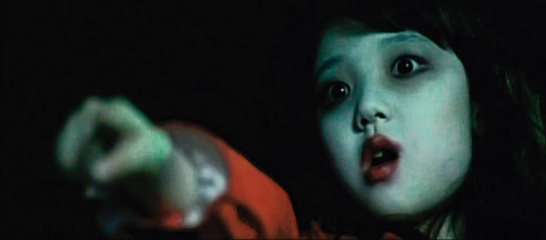
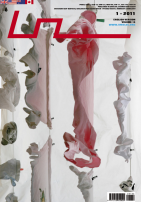









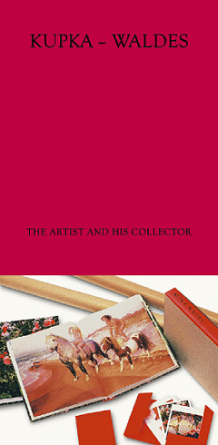






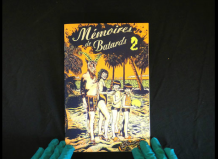




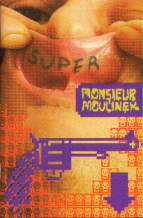
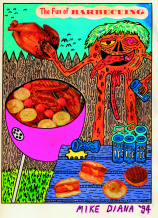

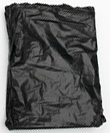


 New book by I.M.Jirous in English at our online bookshop.
New book by I.M.Jirous in English at our online bookshop.
Комментарии
Статья не была прокомментированаДобавить новый комментарий